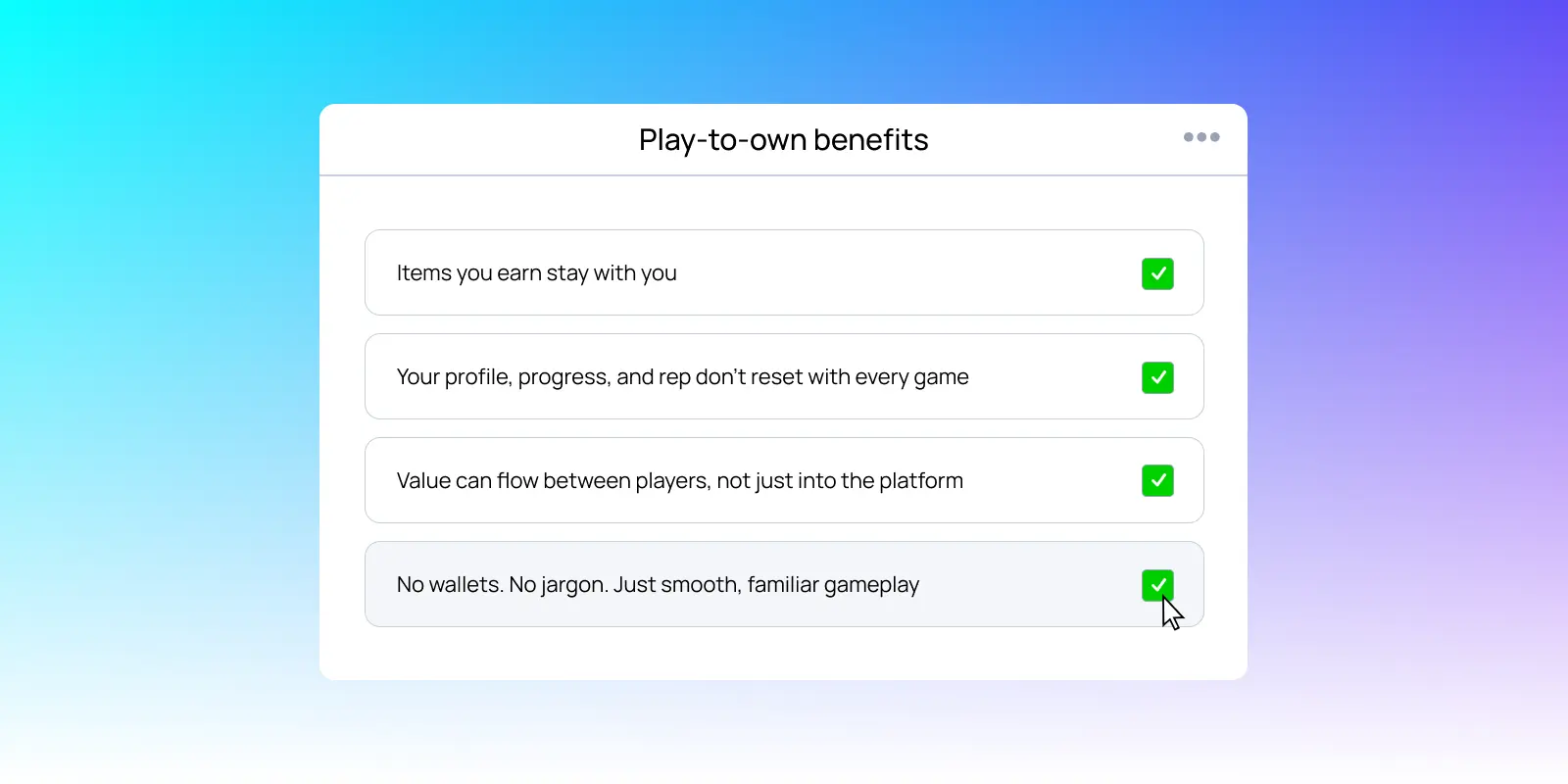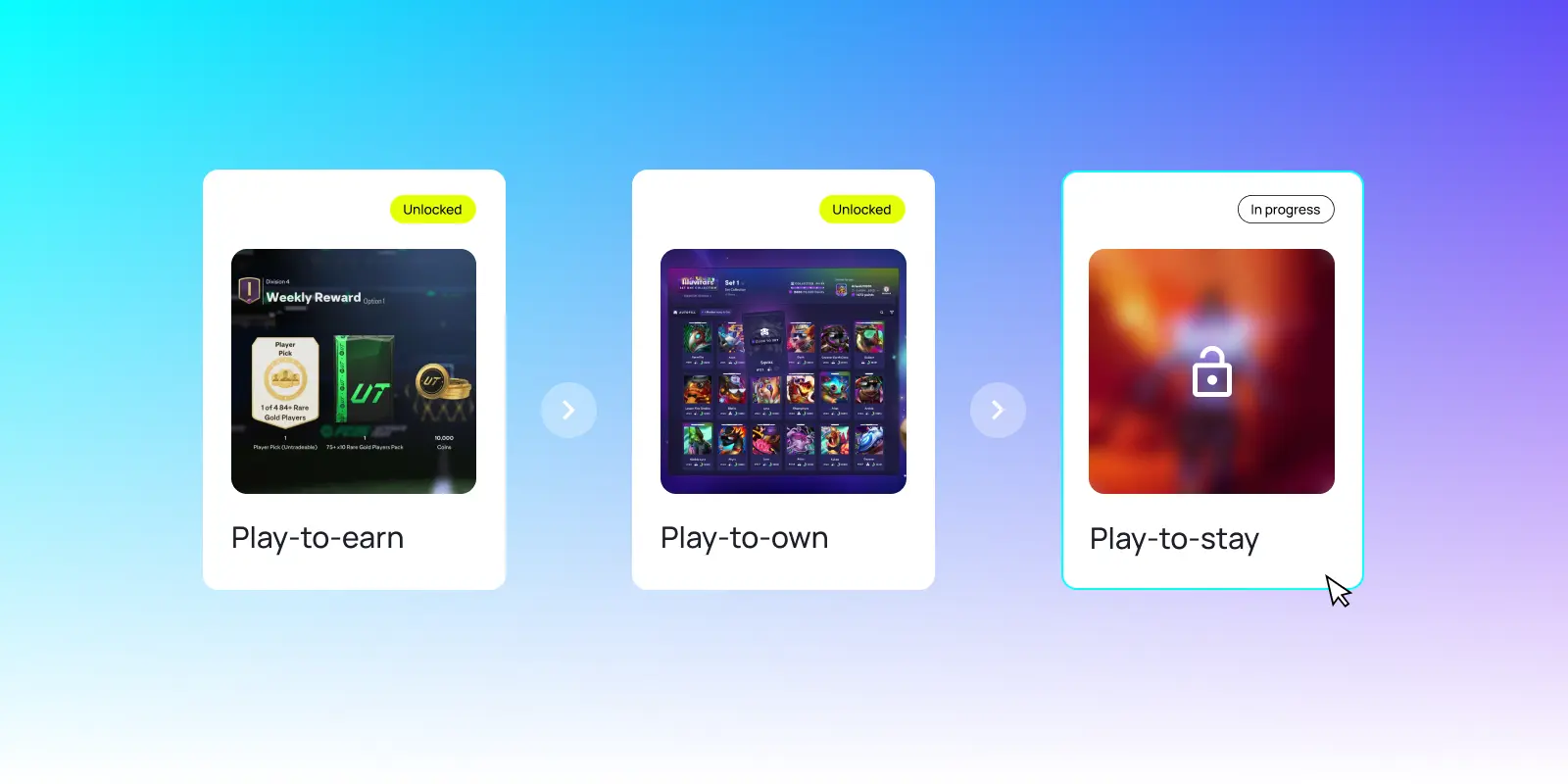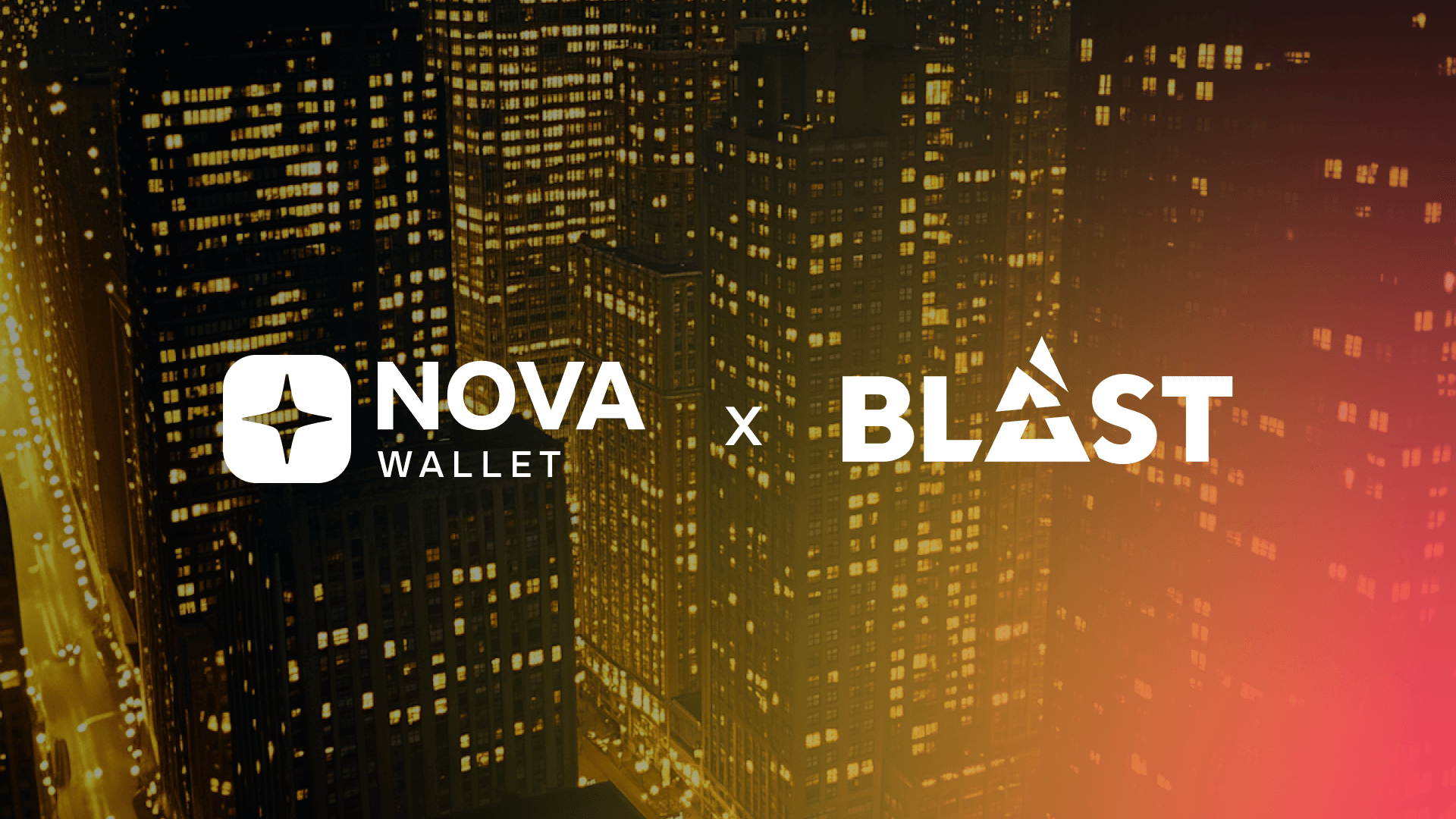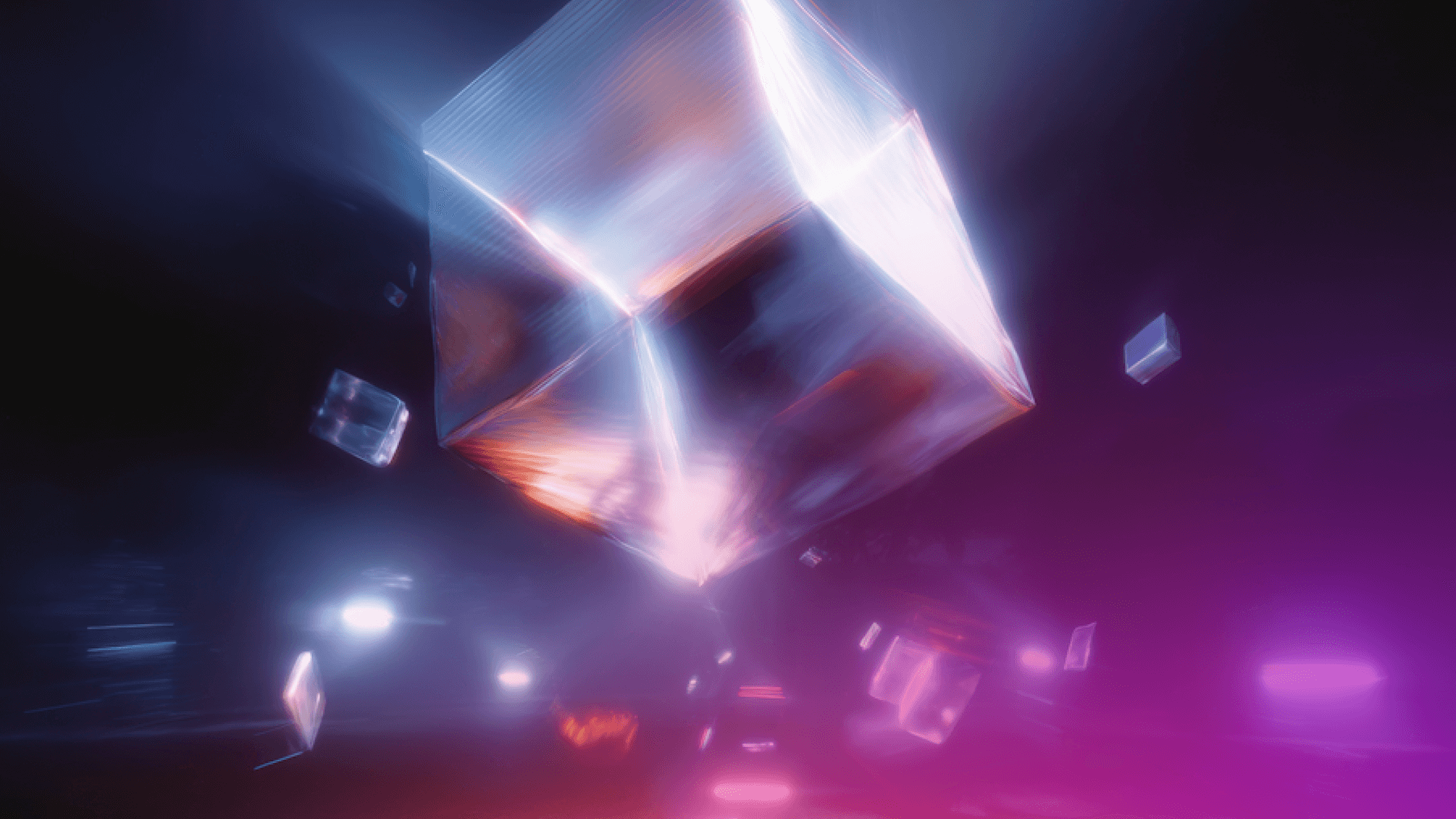The real future of blockchain gaming isn’t about money: It’s about meaning
Early blockchain games missed the mark. But now, Dot Play and Polkadot are helping developers create games that prioritize ownership, creativity, and long-term engagement.
 By Joey Prebys•April 24, 2025
By Joey Prebys•April 24, 2025
What you can expect
- The real benefits of using blockchain in gaming: ownership, creativity, and community
- A look at how early blockchain games went wrong—and why it wasn’t just about Web3
- How Dot Play and Polkadot are helping developers build better games
- Why blockchain gaming still matters—and what comes next
Ask someone what comes to mind when they hear ‘blockchain gaming,’ and you’ll probably hear one thing: money. Not storytelling. Not worldbuilding. Not immersion. Just earning. Or more accurately, games that promised players could earn, while the companies behind them were the ones actually cashing out.
A wave of early play-to-earn (P2E) games promised life-changing rewards but delivered grindy, shallow experiences built around token farming. Instead of designing games people wanted to play, many projects rushed to market with tokenomics-first models that prioritized speculation over substance.
One recent Reddit post summed it up perfectly:
“You shouldn’t build a game around a business model… because people will recognize what’s going on. The only players left are the ones trying to make a quick buck.”
That perception stuck. And a few bad actors made it harder for the builders who actually believe in the potential of Web3 to create something better.
The early play-to-earn craze didn’t just burn players out; it buried the real promise of blockchain in gaming. Web3 was never meant to center speculation. It was meant to empower players: to give them control over their progress, their items, and their identities across digital worlds. And ecosystems like Polkadot are helping bring that vision to life by offering infrastructure that supports great games without ever getting in the way.
Monetization isn’t new, but Web3 changes who benefits
Spending money in games didn’t start with Web3. Gamers have been shelling out for boosters, character skins, gear, loot boxes, upgrades, and early access for years.
What’s new is the idea that you can truly own what you buy, not just license it.
According to the Entertainment Software Association, U.S. gamers spent $57.2 billion on video games in 2023. That’s the big picture. But zooming in, it gets even more personal: a survey by Unstoppable Games found that the average player expects to spend around $6,425 on in-game items over their lifetime. And more than half of those players said they were frustrated that they couldn’t gift, resell, or trade the items they bought.
Web3 changes that dynamic. Instead of locking purchases into a single title or platform, blockchain infrastructure lets players truly own their digital assets and use them however they want.
The issue isn’t that games are monetized. It’s that most of that value stays trapped in closed systems, with none of it flowing back to the people who helped generate it.
What are the real benefits of using blockchain in gaming?
Web3, at its core, is built on a few powerful ideas:
- Decentralization: Power shifts from platforms to communities.
- Ownership: People should control the digital things they buy, earn, or create.
- Transparency: Communities thrive when systems are open and flexible.
These values weren’t created for gaming specifically, but gaming has everything to gain from them.
Imagine this: instead of spending hundreds of dollars on in-game items you can’t use outside one title (or lose entirely if a server goes offline), you own what you earn. You can trade it, keep it, use it elsewhere, or sell it, if you want. That’s the promise of tokenized digital assets. And it’s already happening.
We explored this in a recent blog, exploring how games like NFL Rivals, Evrloot, and Exiled Racers are putting real ownership in players’ hands. Whether it’s trading cards, gear, vehicles, or heroes, these projects give players control over their in-game assets.
And it’s not just about assets. With Web3, creativity becomes part of the experience. Players can remix in-game items, contribute original content, and even earn rewards or attribution through smart contracts. That’s nearly impossible in most traditional games.
This is the version of blockchain gaming we’re building toward. And ecosystems like Polkadot are making it possible: a model where games aren’t designed around speculation, but around participation. Where value flows back to the players. And where blockchain isn’t the feature, it’s just the foundation.
Where things went wrong: the potential of P2E and the problems it revealed
Play-to-earn (P2E) isn’t inherently extractive. It introduced new ways to reward players, especially in underserved communities.
Axie Infinity, a Pokémon-style battle game built on crypto rewards, gained major traction during the pandemic. In the Philippines, some players were able to cover rent, pay bills, or even start small businesses thanks to the game’s early success. STEPN, a “walk-to-earn” fitness game, encouraged people to get outside and move. It even partnered with major brands like Adidas.
These were early signs that blockchain gaming could do more than entertain. It could change lives.
But the problem wasn’t blockchain gaming. It was the extractive mindset that had already taken root across the industry. Think about the mobile games we’ve all played: they start off fun, then suddenly you’re watching ads every 30 seconds or buying coins just to keep going.
That’s not a Web3 problem. That’s a gaming problem.
The mistake was thinking blockchain could fix that overnight. Or worse, letting the same monetization-first playbook run wild with a new set of tools. Instead of reimagining how games could be fairer, more open, and more player-driven, early P2E projects leaned into the same manipulative incentives, just with tokens instead of coins.
Many launched with unsustainable incentives and misaligned tokenomics. Early adopters saw the biggest gains, while latecomers faced inflated costs and unclear rewards. As these economies went viral, they couldn’t adapt quickly enough.
STEPN is a good example. The project shifted from a single token to two, introduced sudden burn mechanisms, and rolled out complex changes with little warning. The result was confusion, a loss of trust, and a sharp drop in player engagement.
The issue wasn’t just volatility. It was the lack of long-term design. Many games chased growth at the expense of retention. They focused on short-term token performance instead of building a game people wanted to return to.
A recent post on the Polkadot blog explored how onchain sports games are taking a different approach. Instead of relying on hype, they reward verifiable skill through transparent systems. It’s still early, but these experiments show what’s possible when gameplay comes first and incentives are designed to support real participation over time.
P2E showed us what was possible. Now it’s time to build models that put fun, fairness, and community first.
Rebuilding the narrative: what better Web3 gaming looks like

The best games don’t succeed because they offer payouts. They succeed because they’re fun to play. They build worlds people want to come back to. They give players a sense of identity, progress, and belonging.
That’s the bar. And blockchain shouldn’t lower it. It should raise it.
Web3 can support better games by reinforcing the parts that already matter to players:
- Asset permanence: Items you earn stay with you.
- Portable identity: Your profile, progress, and rep don’t reset with every game.
- Player-driven economies: Value can flow between players, not just into the platform.
- Intuitive UX: No wallets. No jargon. Just smooth, familiar gameplay.
This is where the idea of play-to-own (P2O) comes in. Instead of focusing on financial gain, P2O emphasizes participation, progression, and lasting value. It’s a more sustainable model, one that puts players first, and we’ll explore it more deeply in next week’s blog.
For now, the point is simple: blockchain doesn’t need to be the centerpiece. It just needs to support better systems. And that’s exactly what the next wave of Web3 games are starting to do.
The future of blockchain gaming: Dot Play and games doing Web3 right

The future of blockchain gaming isn’t about extracting value. It’s about giving it back. And we’re already seeing this shift in action.
One promising example is Dot Play, an initiative in the Polkadot ecosystem that helps developers build games grounded in Web3 values. It’s led by Angela Dalton, CEO / Founder of Signum Growth, a firm that’s backed by major players like Epic Games, Discord, and Mythical Games. Dalton has been a vocal critic of early blockchain gaming models that prioritized token speculation over entertainment.
“What we’ve seen so far in blockchain video games is not really traditional video games… A few people get together, launch a token, play some sort of mechanism, and sell the token and move on,” she said in a recent interview.
Dalton passed on investing in Axie Infinity, not because it lacked scale, but because it lacked substance. That mindset—focused on sustainable, player-first experiences—drives Dot Play’s mission: to support studios building actual games, not just token economies.
Her decision to build on Polkadot was just as intentional. After evaluating the technical and regulatory limitations of other blockchains, Dalton saw Polkadot as a future-proof foundation: decentralized by design, built for mass market scalability, and uniquely aligned with Web3 values like user privacy, property rights, and compliance. In her words, “It wasn’t just about launching a token. It was about building a system people could trust long-term.”
Dot Play isn’t a game or a marketplace. It’s a collaborative effort to help developers design immersive, player-driven games that don’t rely on speculation to succeed. The goal is to give developers the support they need to design experiences that last.
By tapping into Polkadot’s modular infrastructure, like the Polkadot SDK and shared security, developers can focus more on game design and less on backend maintenance. That means building games where players can own and trade their in-game items, carry their identity across titles, and take part in player-powered economies.
As the Web3 Foundation puts it, Dot Play is part of a broader shift toward decentralized, interoperable game development. It’s still early, but efforts like this show how blockchain can quietly support better games, not distract from them.
Blockchain gaming still matters
Web3 gaming was never meant to be about cash grabs. At its core, it’s always been about giving players more: more agency, more ownership, more freedom to create and connect.
That original vision hasn’t changed; it just got buried under the hype. Now, the builders focused on real gameplay, sustainable design, and player-driven systems are bringing it back.
For developers and players who care about lasting impact, open ecosystems, and games that respect the people who play them, Web3 still offers something no other model can: a foundation built to empower the people who play.











